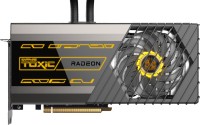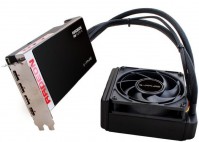Graphics Cards Sapphire series Pulse (gaming)
prices on 17 modelsSapphire Pulse Series
The cards of this series are distinguished by relatively small dimensions and quite affordable prices, and in terms of equipment they resemble the older Nitro Plus models. Many representatives of these lines have a common approach to design - everything important is a priority, everything unnecessary is down. Instead of a useless backlight or a separate display, many Pulse accelerators are equipped with a mechanical BIOS operation switch, a convenient dashboard for controlling the memory chip, and a connector for additional power.
 |
Well, the reference cooling is completely changed in order to keep under control the hot video chips that AMD/Radeon is famous for. Usually, the noise from the fans does not go beyond the average level even at the maximum fan speed. Under normal gaming load, it is even lower. If the load is at zero, then you can simply click the BIOS button and put the graphics card in a completely silent passive mode. In this case, there will be no extraneous sounds like the whistle of throttles. This conservative approach to design sometimes gives the impression that Sapphire's engineering department is in charge of marketing, and not, as usual, vice versa.
The Pulse line is formed by mid-range and slightly above-average graphics cards, usually, these are models of the 5500 XT and 5600 XT caliber. Their main competitors in the NVIDIA camp are the "Ti" and "SUPER" versions of the GeForce 1650/1660 and GeForce 2060 accelerators. Such video cards are designed for Full HD fans who do not plan to upgrade to higher resolutions. Also in the Pulse range are mid-range accelerators from past generations, like the RX 570 and RX 580, which feel surprisingly good by the standards of gaming projects in 2020. Especially if there is 8 GB of video memory on board, and not 4 GB.





